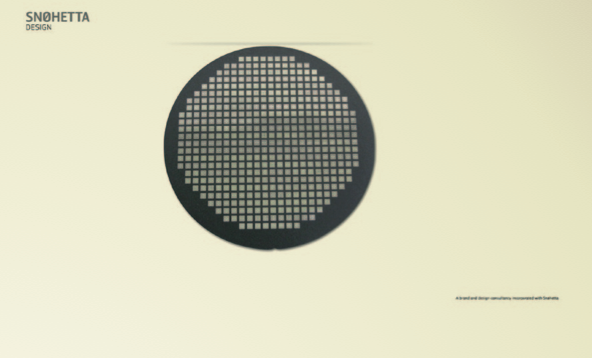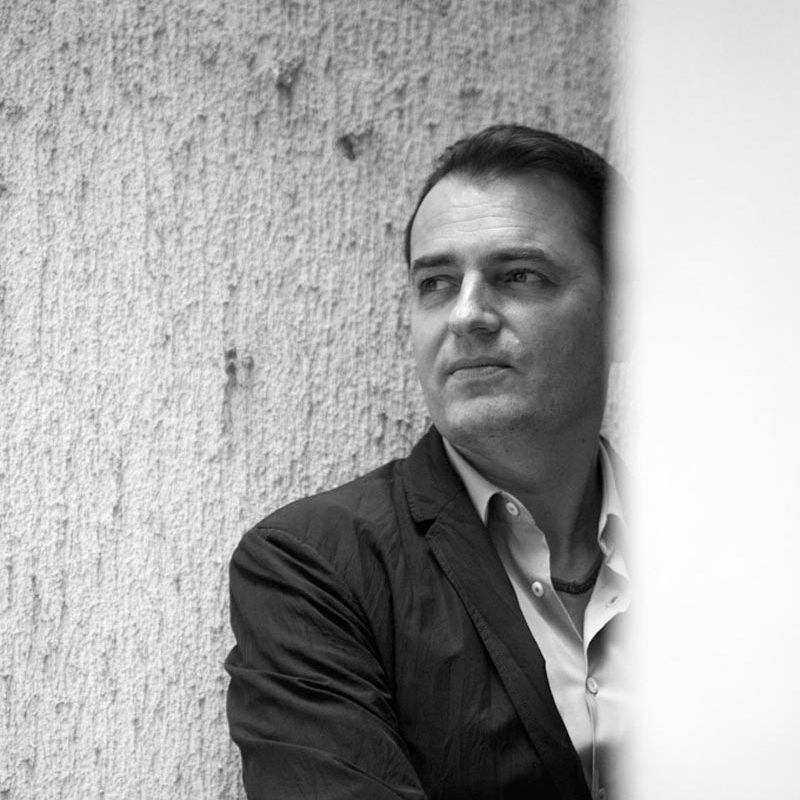
INTERVIEW WITH MARTIN GRAN – POLITIKA
Alexandria Library:
Connecting Cultures, People and History
The biggest public library in the world covers an area of 40.000 sq. meters. The cost of this ambitious project amounted to 220 million dollars and it took about 20 years to complete. For the first time in Serbia, visitors of Belgrade Design Week had a unique opportunity to hear the lecture from a representative of the famous international architecture, landscape architecture and interior design studio, Snøhetta. The Alexandria Library, Oslo Opera House, The Center for Knowledge and Culture in Mecca in Saudi Arabia, are some of the projects of this world famous studio headquartered in Oslo and New York. Thanks to the assistance provided by the Norwegian Embassy in Serbia, at the Future2 conference at the Yugoslav Drama Theatre, Mr. Martin Gran, executive manager of Snøhetta Design, explained their unique method of creating concepts, important projects and the vision of this studio to the festival audience.
We believe that the presence in an international arena for creativity is mandatory for any Snøhetta project, and therefore BDW is a relevant place to
be – both on and off stage. We are both delighted and honored to be asked to come and give a talk. I am in Belgrade for the first time and I am very happy. At the Future2 conference I was talking about Snøhetta’s most important asset: the people or, as we often call ourselves, Snøhettene (snow hoods). Over the years, these people have created architecture and design that have both inspired and led to discussions about how we interact and live with landscape and architecture. I was also talking about Snøhetta’s ability to put creativity before construction; it is our belief that the concepts are more important than the creation in itself. And, of course, this conceptual competence is the basis for creativity in our new branch, a branding and graphic design agency, Snøhetta Design – said Martin Gran for the Politika interview.
The history of the company Snøhetta begins in 1989, when a team of architects and designers gathered around the Alexandria Library project. The same year, with that project, they won at the competition held in Los Angeles. At the site of the ancient library on the Mediterranean Sea, between old residential buildings, Snøhetta created an 11-story building of glass and concrete that resembles a huge solar disk. At the granite wall overlooking the south, the verses of world famous songs are carved into the stone, which is, in a way, a promotion of national, cultural and linguistic diversity that is being treasured in this building. Covering the area of about 40.000 sq. meters, it is the biggest public library in the world, containing specialized libraries, children’s libraries, libraries with rare books, manuscripts, microfilms…It also houses a museum designed based on an ancient model. What especially stands out is the “Nobel’s room”. It is situated on the third floor and it houses the world’s most iconic literature – books written between 1901 and 2001, for which the authors received the Nobel prize. The construction of this ambitious project cost the investors 220 million dollars, and the process lasted 20 years.
The Alexandria Library is perhaps one of the projects in Snøhetta that I first got to know that literally visualized Snøhetta magnificent conceptual force. The concept of it is a complex mix of culture, society and history. Often explained in a typical Snøhetta saying: a philosophical dimension of the past, present and future. But, to prototype the concept in the early phase, Snøhetta had a discussion about the attributes of the first modern storage technology – as analogy to the traditional attributes of a papyrus, book or even a library – the silicium microchip (integrated circuit). The first one was round and, of course, very small. Now, if you look at a magnified picture of silicon microchip, you clearly identify the similarity of the rounded roof of Alexandria. And, not only having conceptualized the function of a chip together with its design, the plus- minus data technology is copied into the concept of the roof’s windows functionality; letting in light indirectly, so that any precious storage of history is not damaged or affected by direct sunlight. To create a concept that resulted in this both intimate and monumental reading hall, and a building that promotes knowledge and development, from a microscopic prototype, is for me both impressive and inspirational – said Martin Gran.
Even though he is not familiar with the Serbian design scene, the guest from Snøhetta said that it was high time he came to listen, learn and talk to the creative people from our country. He believes that conversation is probably the most powerful tool to nurture creativity and build the foundation for innovation, and emphasizes particularly the link between art and architecture.
Art can sometimes communicate with us on a level that language and our subconscious cannot, I think. Matters that move us, but can’t be explained, are fascinating. And art is sometimes just that, fascinating. And at the same time, if I could quote something Craig Dykers once said: Architecture can make space for art and art can make space for architecture. Landmarks are not always visible; an icon exists in the mind. The iconic within architecture is to be found in the relationship between content and form – said Gran.
Today Snøhetta has approximately 120 collaborators working on projects in Europe, Asia and America. The entire business policy made it possible for Snøhetta to complete some of the largest projects worldwide in the past few years, particularly the unconventional fish market in Muscat, Oman, inspired by the river’s flow, campaigns and web design for Pepsi, RAW, VISA card, AGUA IMARA, SN POWER, and to participate in creating the visual identity for the Eurovision song contest in Oslo.
We work on several branding and design projects, both in Oslo and New York. In Oslo, we are currently re-branding one of largest Norwegian financial institutions, and at the same time working on several book design projects. We re-branded the Norwegian Nurses Foundation and are finalizing a new name and brand for a hydro-power plant, operating in Africa and Central America. In New York, we are working on a joint architecture and branding concept for a new building at the historic Meatpacking district, to name a few.
Based on our profession, in the future, we think that the creative scene will be influenced by two strong driving forces. The first one is that the creators
who have the ability to have two thoughts in their mind at the same time, will survive. In a way, we could say that the potential for innovation will rise from businesses that have a holistic approach. The second driving force are alliances. We believe that by building strong and strategic alliances, we will not only get better ourselves, but – to quote a gestalt-psychology principle: “The whole will be greater than the sum of its parts”- concluded Martin Gran.
Trackback from your site.
